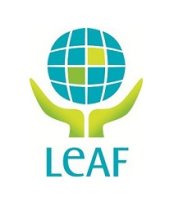2001 - The 1st Lettinga Award
The first Lettinga Award was granted to the project "Anaerobic Granular Sludge Bed Technology Web Pages" by Dr. Jim A. Field and Dr. Reyes Sierra, both from the University of Arizona, USA. It was awarded at the 9th IWA Anaerobic Digestion congress in Antwerp, Belgium, September 2001, and kicked off on March 1st 2002. The result can be seen on http://www.uasb.org.
The winning proposal is based on the fact that despite the clear merits of the anaerobic granular sludge bed reactor technology for wastewater treatment (matured, broad array of applications, durability, low cost, simplicity and sustainable character), the vast potential markets are largely unutilised. The main barriers for the technology diffusion are not technical but rather due to a lack of awareness, familiarity and acceptability among environmental technology users. The purpose of the winning proposal is therefore focused on transfer of know-how about anaerobic technologies, making it a more familiar and accepted technology to decision-makers, engineers and scientists across the globe by developing the core web page for anaerobic granular sludge bed technology: http://www.uasb.org
The jury was impressed by the quality of the proposal: it was very well written, the output was clearly defined, and the project has a clear and own identity. The output of the project foresees in a demand from several types of users, can easily be measured and the impact is expected to be high.
The submitters of this winning project are Dr. Jim Field and Dr. Reyes Sierra of the University of Arizona, USA. Both researchers have deserved international respect for their work in the anaerobic field. Jim Field, originally from USA, is an expert in the microbiology and biochemistry of anaerobic degradation processes. His latest work was on White Rot Fungi for which he developed the White Rot Fungi web pages. He received his PhD in Wageningen, with professor Lettinga. Reyes Sierra, originally from Spain, received her PhD on anaerobic treatability of forest industry wastewaters also in Wageningen, at about the same time as Jim Field. From that time on, she and Jim are inseparable. She has been further exploring the anaerobic degradability of wood constituents.
